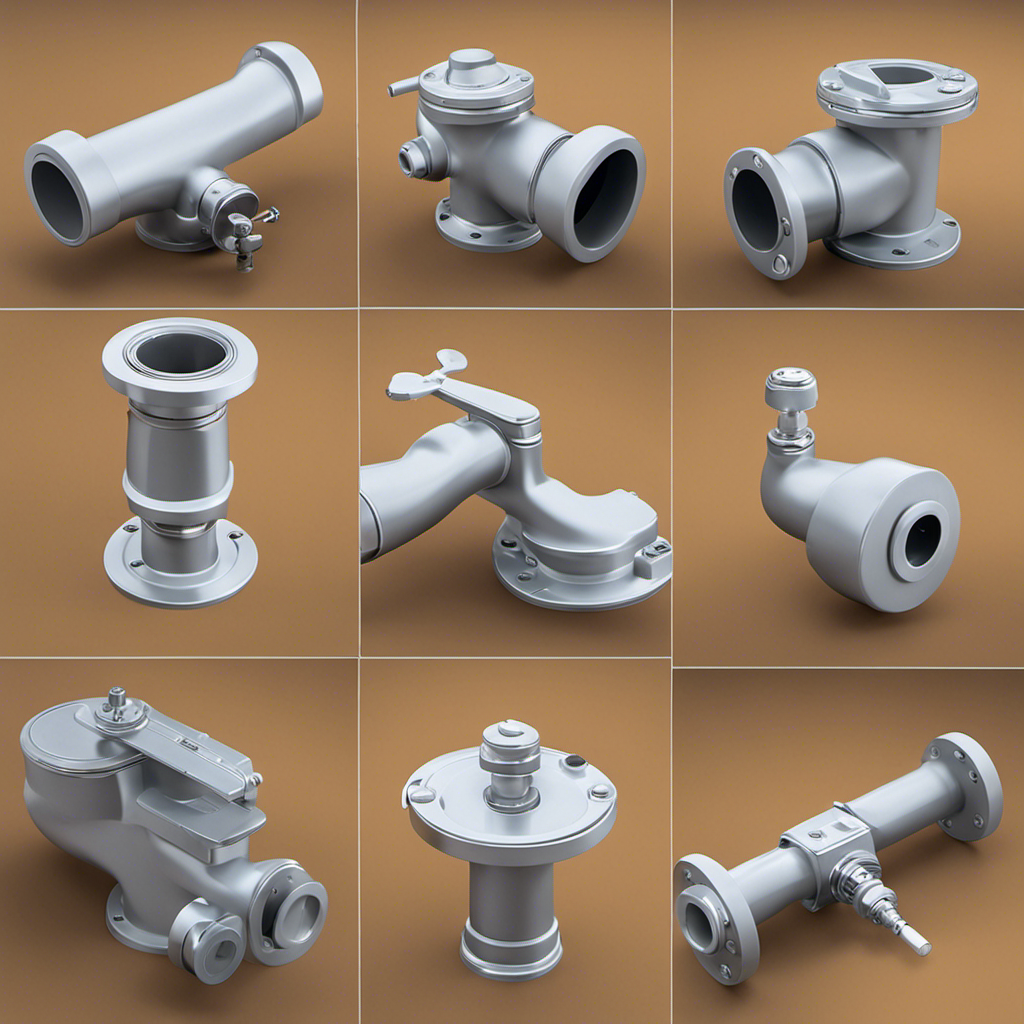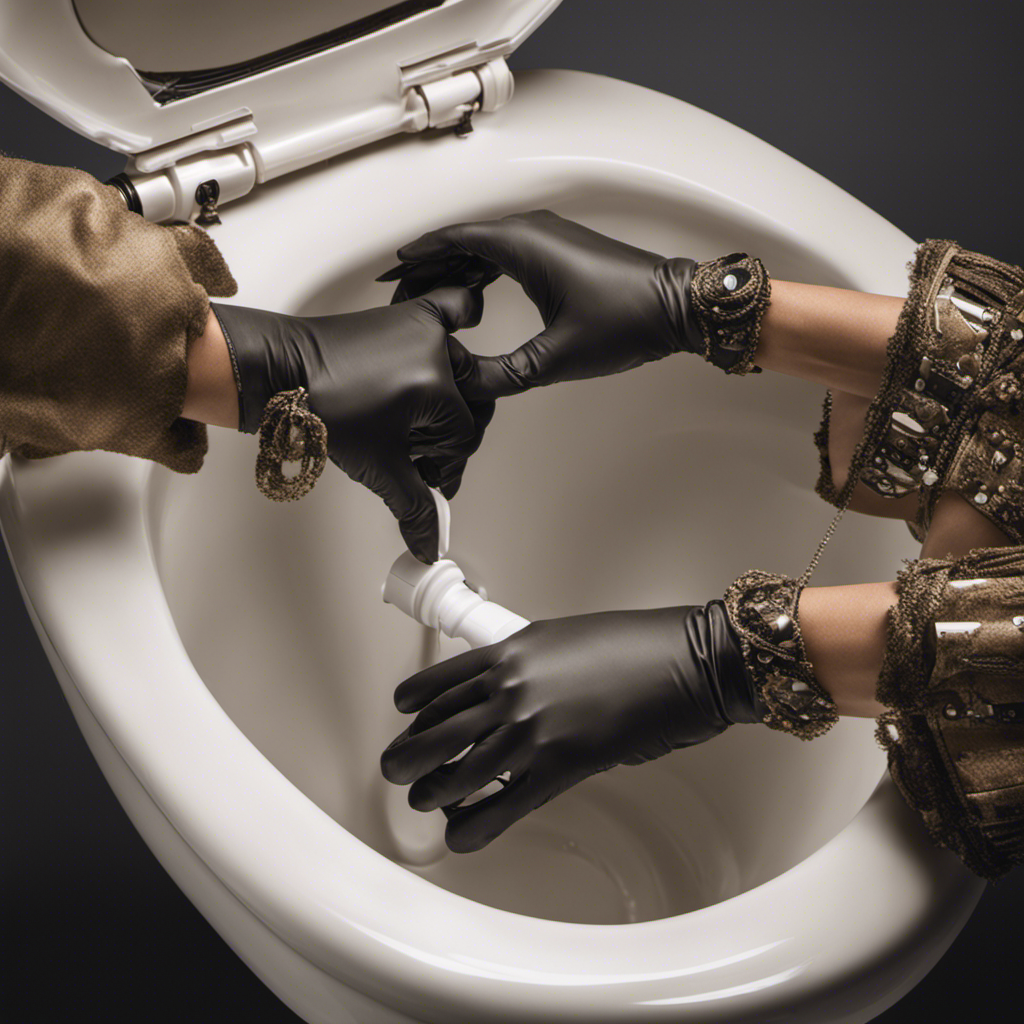I’ve learned the hard way that a faulty toilet shut off valve can cause quite the mess. But fear not, my fellow DIY enthusiasts! In this guide, I’ll show you how to tackle this plumbing project like a pro.
With just a few tools and some elbow grease, you’ll be able to replace that pesky shut off valve in no time. So let’s roll up our sleeves and get to work, ensuring a leak-free and smoothly functioning toilet in the process.
Key Takeaways
- Select the right shut off valve replacement based on size and type of existing valve
- Shut off and maintain the water supply to prevent leaks or being stuck
- Disconnect the old shut off valve by ensuring the water supply is fully turned off and loosening the compression nut
- Install the new shut off valve by properly aligning it with the water supply line and troubleshooting any issues during installation
Gathering the Necessary Tools and Materials
Before starting the project, make sure you’ve gathered all the necessary tools and materials.
When it comes to selecting the right shut off valve replacement, there are a few things to consider. First, make sure you know the size and type of the existing valve. This will help you choose a replacement that fits properly. Additionally, check if you need a compression or threaded valve, depending on your plumbing setup.
As for common challenges and troubleshooting during the replacement process, one issue you might encounter is a stubborn or corroded valve that is difficult to remove. In such cases, using a penetrating oil and a wrench can help loosen it. Another challenge could be leaks after installing the new valve, which can be fixed by tightening the connections or using plumber’s tape.
Now that you understand the importance of gathering the necessary tools and materials, let’s move on to the next step: shutting off the water supply to the toilet.
Shutting off the Water Supply to the Toilet
To stop the water supply to your toilet, you’ll need to turn the shut off valve clockwise until it’s fully closed.
Regular maintenance of toilet shut off valves is important to ensure they function properly. Over time, these valves can develop issues such as leaks or becoming stuck in the open or closed position.
If your shut off valve is leaking, you can try tightening the packing nut with a wrench. If it’s stuck, you can try loosening the nut and lubricating the stem with some silicone grease.
If these troubleshooting steps don’t work, it may be time to replace the shut off valve altogether. By regularly checking and maintaining your shut off valve, you can prevent water damage and ensure the proper functioning of your toilet.
Now, let’s move on to disconnecting the old shut off valve.
Disconnecting the Old Shut off Valve
When disconnecting the old shut off valve, it’s important to ensure that the water supply is fully turned off. This will prevent any potential water leaks or damage.
To begin, locate the shut off valve, usually located near the base of the toilet. Use a wrench to turn the valve clockwise until it is closed.
Next, use another wrench to loosen the compression nut that connects the shut off valve to the water supply line. Be careful not to apply too much force, as this can cause damage.
Once the nut is loosened, carefully remove the old shut off valve from the water supply line. Common issues with old shut off valves include corrosion, leaks, and difficulty in turning the valve.
Inspect the valve for any signs of damage and replace as necessary.
Installing the New Shut off Valve
You’ll need a wrench to tighten the compression nut on the new valve and ensure a secure connection to the water supply line. When installing a new shut off valve, it’s important to troubleshoot common issues that may arise during the process. Here are a few tips to help you navigate the installation smoothly:
- Troubleshooting common issues during shut off valve installation:
- Check for leaks: After installing the new shut off valve, turn the water supply back on and inspect for any leaks. If there are any, tighten the compression nut or replace the valve if necessary.
- Proper alignment: Ensure that the valve is aligned correctly with the water supply line. Misalignment can cause leaks or difficulty in turning off the water flow.
Understanding the different types of shut off valves and their benefits can also be helpful during installation. There are ball valves, gate valves, and quarter-turn valves, each with their own advantages. For example, ball valves are durable and provide a quick shut off, while quarter-turn valves are easy to operate and require less maintenance.
Now that you’ve successfully installed the new shut off valve, it’s time to move on to the next step: testing the new shut off valve.
Testing the New Shut off Valve
Now that the new shut off valve has been installed, it’s important to test it for any potential leaks or issues. To ensure that the valve is functioning properly, start by turning the water supply back on.
Slowly open the valve and check for any signs of leakage around the connection points. If you notice any leaks, tighten the connections or replace the faulty parts.
It’s also a good idea to check the valve’s operation by turning it on and off a few times to make sure it works smoothly. If you experience any difficulties or the valve doesn’t shut off completely, you may need to adjust or replace the valve.
Regular maintenance of shut off valves includes cleaning them periodically to remove any debris or mineral buildup that may affect their performance. By troubleshooting common issues and following these maintenance tips, you can ensure that your shut off valve will function properly and prevent any potential water damage.
Cleaning up and Final Steps
To complete the cleaning process and finish up, make sure to wipe down any surfaces that may have come into contact with debris or water. This will help prevent any future issues and maintain a clean and hygienic environment.
Here are some steps and tools you can use to ensure a thorough clean-up:
-
Cleaning tools:
-
Soft cloth or sponge
-
Mild cleaning solution or disinfectant
-
Rubber gloves for protection
-
Proper disposal:
-
Dispose of any debris or old parts in a trash bag or designated waste container.
-
Follow local regulations for disposing of any hazardous materials or chemicals.
Conclusion
In conclusion, replacing a toilet shut off valve is a task that can be easily accomplished with the right tools and knowledge. By following the steps outlined in this article, you can ensure a smooth and successful installation of a new shut off valve.
Just like a skilled plumber, you can confidently handle this project and bring a refreshing flow back into your bathroom. So don’t hesitate to take charge and tackle this task like a seasoned professional.










